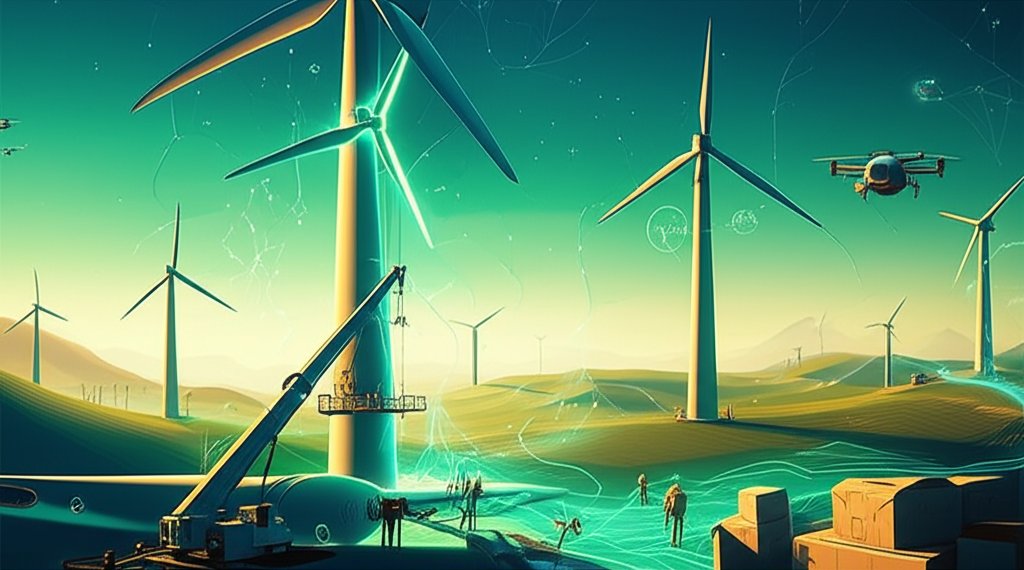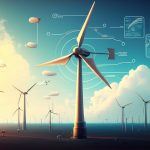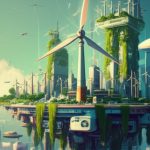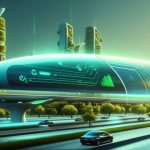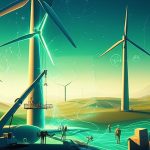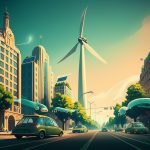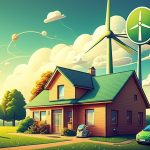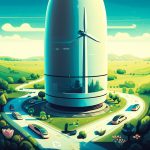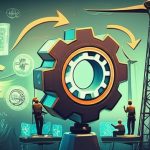Untuk gambaran yang lebih besar dan konteks penuh, pastikan Anda membaca panduan utama kami tentang Stunning Wind Turbine Images for Your Next Project.
markdown
The sight of spinning wind turbines is becoming increasingly common, but the complex process of wind turbine installation often remains a mystery. It’s more than just bolting pieces together; it’s a carefully orchestrated dance of engineering, logistics, and environmental awareness. This article unpacks the key considerations and practical steps involved in bringing these towering giants to life.
At a glance:
- Understand the critical site assessment steps that precede any physical work.
- Learn practical tips for onshore and offshore wind turbine assembly.
- Recognize common challenges and how to mitigate them during installation.
- See how monitoring and inspection ensure long-term turbine performance.
- Gain insights into the future trends shaping wind turbine installation.
Before the Build: Site Assessment is Non-Negotiable
You can’t just plop a wind turbine anywhere. A detailed site assessment is crucial for a successful wind turbine installation. This involves evaluating wind resources, environmental impact, and grid connectivity. Overlooking these aspects can lead to significant delays, cost overruns, and even project failure.
- Wind Resource Assessment: Analyzing historical wind data to estimate energy production. Tools like anemometers and LiDAR (Light Detection and Ranging) are key.
- Environmental Impact Assessment (EIA): Identifying potential impacts on wildlife, noise levels, and visual aesthetics. This often involves consulting with environmental agencies and conducting surveys. For instance, the presence of migratory bird routes would require adaptive shutdown strategies.
- Geotechnical Investigation: Assessing soil conditions to ensure foundation stability. The ground needs to support the massive weight and withstand strong winds.
- Grid Interconnection Study: Evaluating the capacity and reliability of the local power grid to accommodate the generated electricity. This will dictate the necessary transformer platforms and cabling.
Example: In Flevoland, Netherlands, a thorough EIA was conducted before expanding an existing wind farm, leading to adjustments in turbine placement to minimize impact on local bird populations.
Onshore vs. Offshore: Different Environments, Different Strategies
Wind turbine installation differs drastically depending on whether the project is onshore or offshore. Each presents unique challenges and requires specialized equipment.
Onshore Wind Turbine Installation:
- Advantages: Lower installation costs, easier access for maintenance.
- Challenges: Land availability, noise concerns, visual impact.
- Process: Typically involves assembling the turbine components on-site using large cranes. The tower sections are erected first, followed by the nacelle (containing the generator) and finally the blades.
- Example: Wind farms in Worrstadt, Germany, often face logistical hurdles due to narrow roads and limited space for crane maneuvering. Careful planning is essential.
Offshore Wind Turbine Installation: - Advantages: Stronger and more consistent winds, less visual impact.
- Challenges: Higher installation costs, harsh marine environment, complex logistics.
- Process: Often involves pre-assembling turbine components at a port and then transporting them to the site using specialized vessels. Installation can be done using jack-up vessels (which stand on the seabed) or floating cranes.
- Example: The construction of wind farms off the UK coast requires specialized crane vessels capable of lifting massive components in rough sea conditions.
Decision Point: If faced with limited land availability and community opposition, offshore wind turbine installation might be the viable, albeit more expensive, option.
The Assembly Line: Step-by-Step Turbine Erection
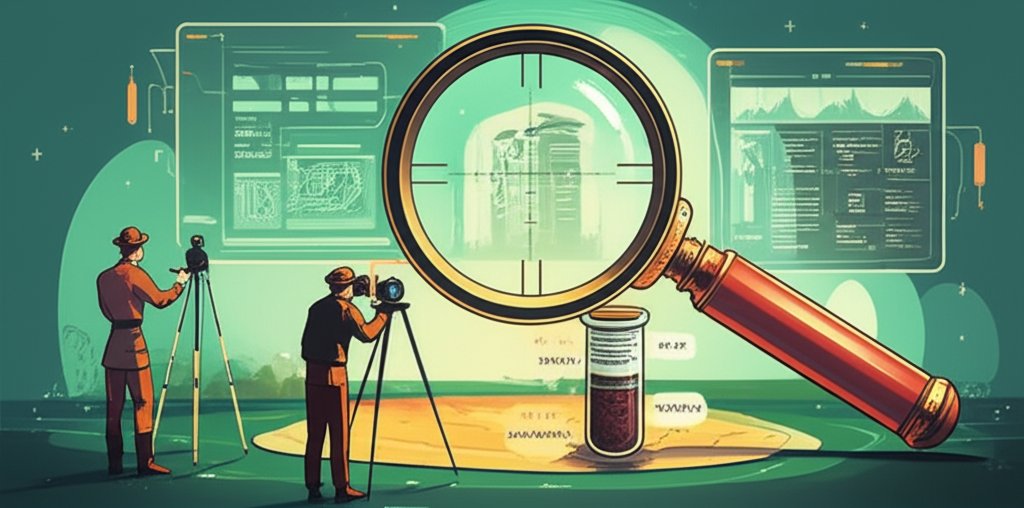
Understanding the sequence of assembly is crucial to ensure successful wind turbine installation. Here’s a simplified overview:
- Foundation Construction: Building the base that will support the turbine. This can be a concrete pad for onshore turbines or a more complex structure like a monopile or jacket for offshore turbines.
- Tower Assembly: Erecting the tower sections using a crane (onshore) or specialized vessels (offshore).
- Nacelle Installation: Lifting and securing the nacelle, which houses the generator, gearbox (in some designs), and other critical components.
- Rotor Blade Installation: Attaching the blades to the hub, either individually or as a pre-assembled rotor.
- Electrical Connection: Connecting the turbine to the grid via underground or subsea cables.
Key Tool: A robust quality control checklist at each stage is critical to prevent future failures.
Troubleshooting: Common Pitfalls and Solutions
Wind turbine installation isn’t always smooth sailing. Here are some common problems and how to address them:
- Weather Delays: High winds, storms, or extreme temperatures can halt installation.
- Solution: Implement weather monitoring systems and develop contingency plans.
- Equipment Malfunctions: Crane breakdowns or vessel failures can cause significant delays.
- Solution: Regularly inspect and maintain equipment. Have backup cranes or vessels available.
- Logistical Challenges: Transporting large components to remote sites can be difficult.
- Solution: Plan transportation routes carefully and coordinate with local authorities.
- Worker Safety: Working at heights and with heavy equipment poses significant safety risks.
- Solution: Implement rigorous safety protocols and provide comprehensive training.
Case Snippet: In a wind farm project in Alibunar, Serbia, unexpected soil instability required a redesign of the foundation, highlighting the importance of thorough geotechnical investigations.
Monitoring and Inspection: Ensuring Long-Term Performance
Once the wind turbine is installed, continuous monitoring and regular inspections are crucial to ensure optimal performance and prevent costly breakdowns.
- Remote Monitoring Systems: Continuously track turbine performance, including wind speed, power output, and component temperatures.
- Scheduled Inspections: Regular visual inspections of the tower, blades, and nacelle to identify any signs of damage or wear.
- Preventive Maintenance: Performing routine maintenance tasks, such as lubricating bearings and tightening bolts, to extend the life of the turbine.
- Blade Inspection: Checking for erosion, cracks, or delamination, especially on leading edges. Drones are increasingly used for this.
Insight: Proactive maintenance, guided by monitoring data, dramatically reduces downtime and extends turbine lifespan.
See stunning wind turbine images to further visualize the scale and complexity of these installations.
The Future of Wind Turbine Installation: Trends to Watch
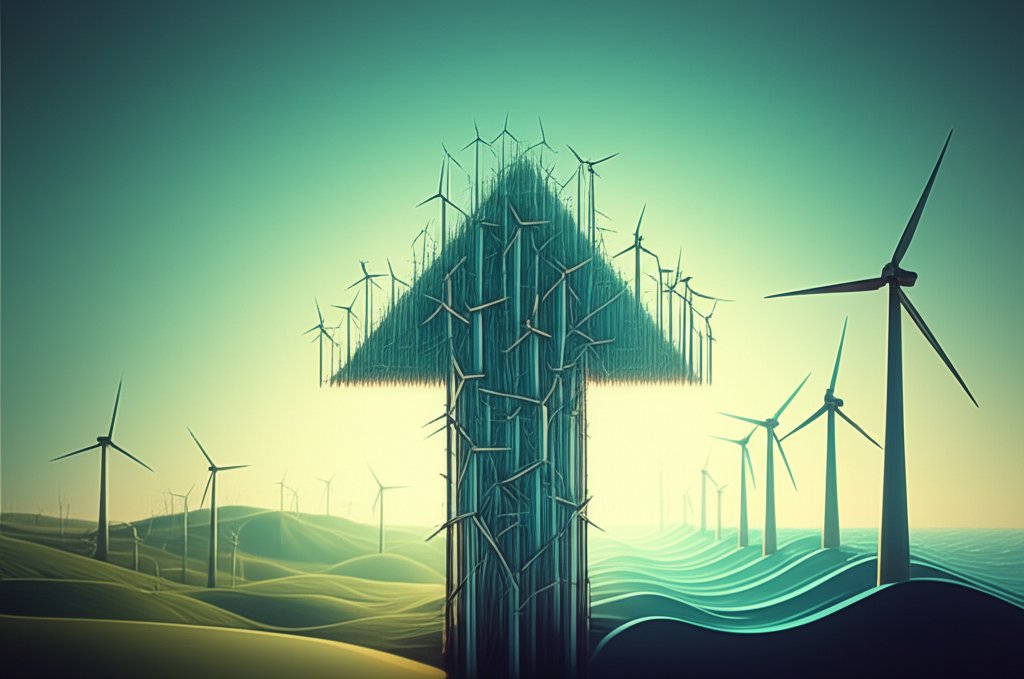
The field of wind turbine installation is constantly evolving. Here are some key trends:
- Larger Turbines: Developers are increasingly using larger turbines with higher capacities, requiring more powerful cranes and innovative installation techniques.
- Floating Wind Farms: These allow wind farms to be located in deeper waters, opening up new areas for development. Installation involves anchoring the turbines to the seabed.
- Automation and Robotics: Robots are being used for tasks such as blade inspection and repair, reducing the need for human workers to perform dangerous tasks.
- Digital Twin Technology: Creating virtual replicas of wind turbines to simulate performance and optimize maintenance schedules.
Practical Playbook: Quick Start for Wind Turbine Installation Planning
Here’s a simplified guide to kickstart your wind turbine installation:
- Initial Site Assessment: Conduct a preliminary assessment of potential sites, considering wind resources, environmental factors, and grid connectivity.
- Detailed Feasibility Study: Perform a comprehensive study, including wind resource modeling, environmental impact assessment, and geotechnical investigation.
- Permitting and Approvals: Obtain all necessary permits and approvals from local, state, and federal agencies.
- Equipment Procurement: Select and procure the necessary wind turbine components, cranes, vessels, and other equipment.
- Construction and Installation: Follow a detailed installation plan, adhering to safety protocols and quality control procedures.
- Commissioning and Testing: Test the turbine to ensure it is operating correctly and connected to the grid.
- Operation and Maintenance: Implement a comprehensive O&M program to ensure long-term performance and reliability.
Quick Answers: Addressing Common Questions About Wind Turbine Installation
- Q: How long does it take to install a wind turbine?
- A: The installation time can vary depending on the project, with onshore turbines taking a few days per turbine and offshore turbines taking 1-2 weeks per turbine.
- Q: What are the biggest challenges in offshore wind turbine installation?
- A: The harsh marine environment, complex logistics, and higher costs are major hurdles.
- Q: How much does it cost to install a wind turbine?
- A: Costs range widely. Onshore turbines might run from $1.3 to $2.2 million per megawatt, while offshore installations can easily double that.
- Q: What safety measures are in place during wind turbine installation?
- A: Comprehensive safety protocols, including fall protection, crane safety procedures, and weather monitoring systems, are critical. Regular training and risk assessments are also essential.
- Q: How is the environmental impact of wind turbine installation minimized?
- A: Through careful site selection, environmental impact assessments, and mitigation measures such as noise reduction strategies and bird deterrent systems.
Beyond the Horizon: Sustainable Energy for a Brighter Future
Wind turbine installation is a complex endeavor, but the rewards—clean, sustainable energy—are substantial. By understanding the key steps, challenges, and trends, you can contribute to building a greener future. Investing in proper planning, skilled technicians (engineers), and ongoing maintenance will ensure these wind farms generate power for decades to come.
- Wind Turbine Installation: Building the Future of Energy - November 7, 2025
- Stunning Wind Turbine Images for Your Next Project - November 5, 2025
- Wind Turbine Generator Kit For Home: Is One Right For You? - November 2, 2025
